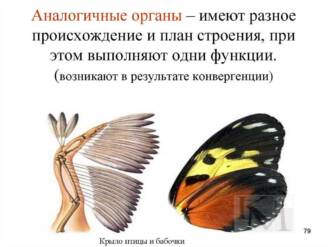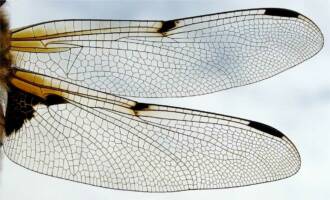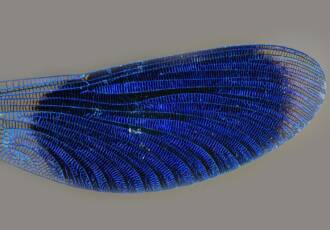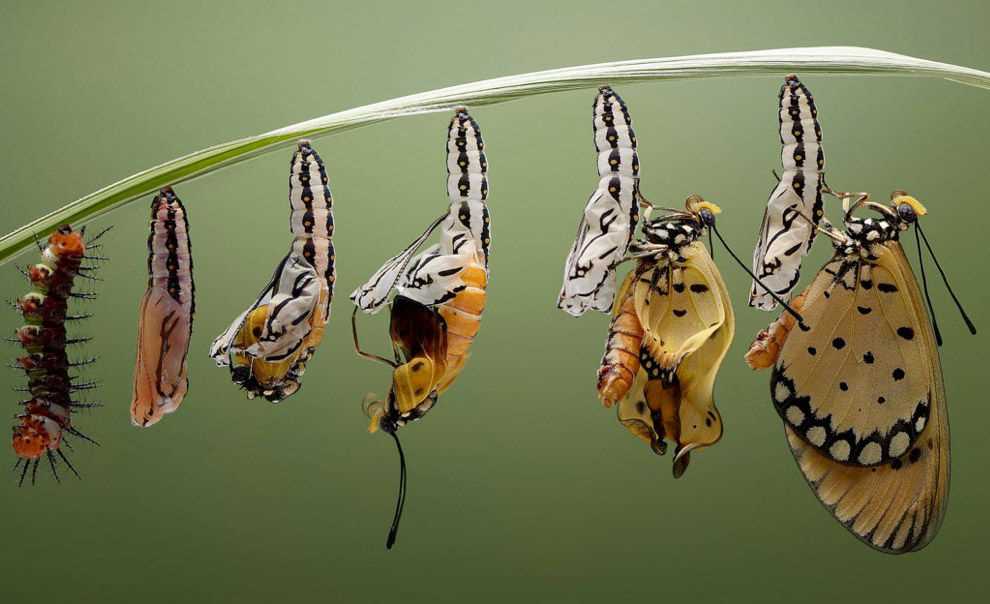
Butterflies are one of the most beautiful creatures in nature and their wings play an important role in their aesthetic appearance. One of the most amazing features of butterfly wings is the eyes that can be seen on some species. But how did these eyes originate and how did they evolve?
Research shows that ocelli on butterfly wings are of evolutionary origin and represent an adaptation to the environment. The ocelli serve to protect butterflies from predators and to attract mates during breeding. They may look like the eyes of predatory animals or bright spots that attract the attention of other butterflies.
The researchers suggest that the eyes on the wings of butterflies evolved through a process of natural selection. Those butterflies that had eyes were more likely to survive and pass on their genes to the next generation. Thus, ocelli began to spread among butterflies and became one of the characteristic features of their wings.
The history of the emergence and evolution of the eye on the wings of butterflies
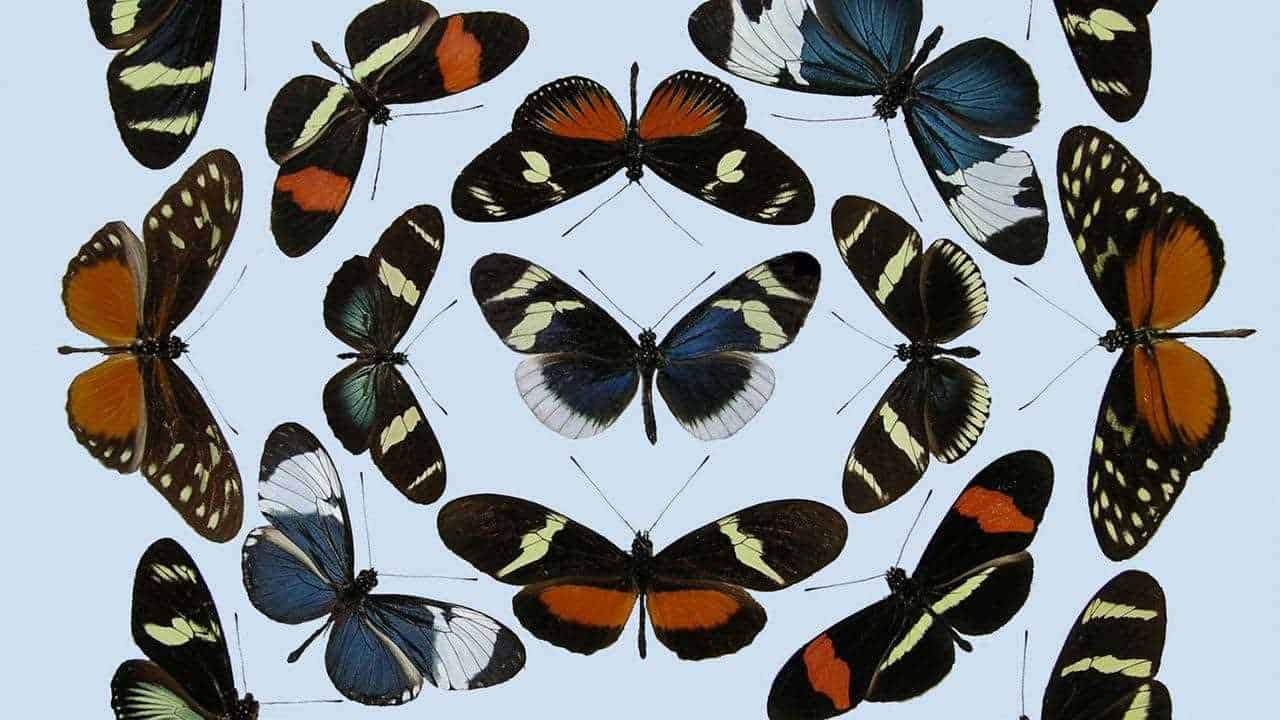
Eyespots on butterfly wings are a unique evolutionary adaptation that has evolved in many species of these beautiful insects. They are brightly colored, rounded spots that look like eyes, located on the wings of butterflies.
The evolution of the eye in butterflies began millions of years ago. It is assumed that originally the eyes on the wings of butterflies appeared as a protective mechanism. Their bright color and shape are reminiscent of the eyes of predatory animals such as birds or lizards. This allows the butterflies to intimidate their enemies and draw their attention away from vulnerable body parts.
However, over time, the eyes on the wings of butterflies have become not only a means of protection, but also a tool for seduction. Many species of butterflies use their eyes as signals to attract mates. The bright color and large eyes serve as a signal of the health and strength of males, which makes them more attractive to females.
It is interesting to note that the eyes on butterfly wings are not real eyes. They are just an optical illusion created by special patterns and coloring on the wings. This is a perfect example of how evolution can use various mechanisms to create effective protective and attractive adaptations in nature.
The evolutionary origin of the eyes on the wings
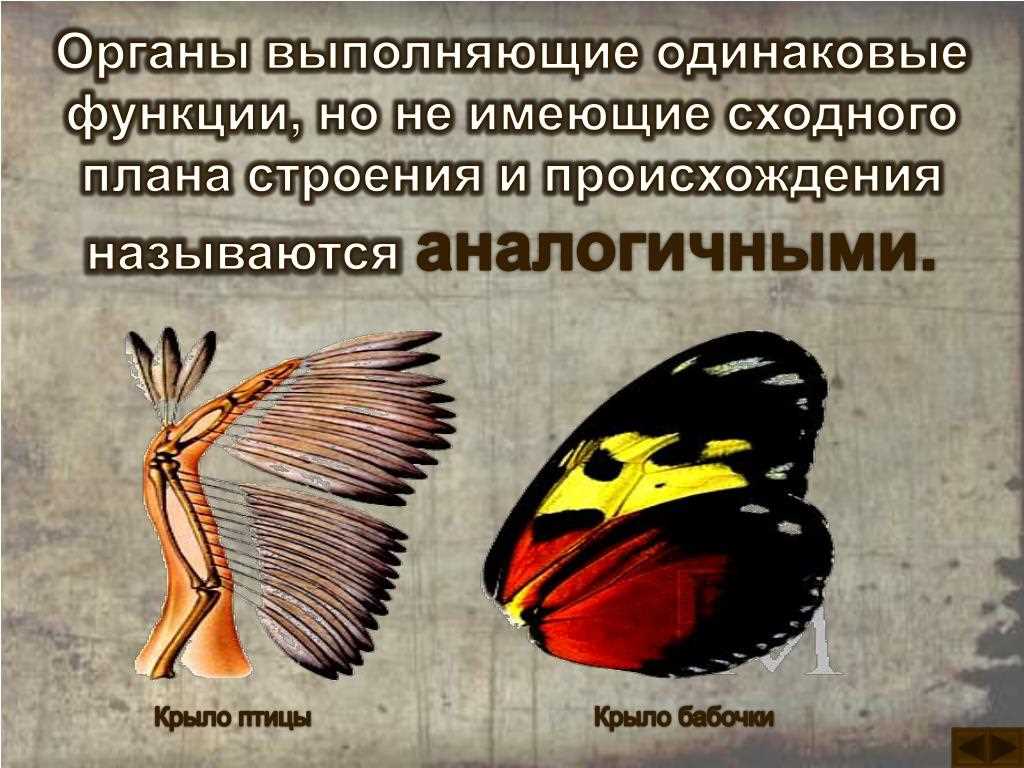
Butterfly wing eyes are a unique adaptive feature that helps them survive in the environment and protect themselves from predators. Their evolutionary origin is associated with the gradual formation and development of various structures on the wings of butterflies.
Research shows that the evolutionary origin of the eyes on butterfly wings is due to the process of mimicry. Mimicry is an evolutionary phenomenon in which one species mimics another species in order to protect or deceive predators. The eyes on the wings of butterflies are a kind of camouflage mechanism that mimics the eyes of a large predatory animal.
In the process of evolution, the eyes on the wings gradually developed and became more and more complex. Research shows that the eyes were originally simple round spots on the wings. Gradually, they took on an increasingly realistic eye shape, with a black center and white edges. This allowed the butterflies to create an optical illusion of a predator's eye.
Some species of butterflies have eyes only on the hindwings, while others have them on both the forewings and hindwings. Researchers believe this diversity is due to the different adaptive strategies that different species of butterflies adopt to protect themselves from predators.
In general, the evolutionary origin of the eyes on the wings of butterflies is an example of adaptive development that allows them to survive in the environment and deceive predators. This is a vivid example of how nature finds various ways to ensure the survival and development of different species in the animal world.
Variety of eye shapes and colors

The ocelli on the wings of butterflies are bright, rounded spots that serve as a defense against predators and attract attention during breeding. Their shapes and colors are varied, which makes each type of butterfly unique.
Eye shapes:
- Round eyes are the most common shape. They can be of different sizes and located on different parts of the wings.
- Oval eyes - have a more elongated shape and are often located along the edge of the wings.
- Triangular eyes - have the shape of a triangle and are often found in butterflies from the pigeon family.
- Striped eyes - have the shape of a strip and can be located both along the edge of the wings and in their middle.
Eye colors:
- Black eyes are the most common color. They usually serve to imitate the eyes of a predator and divert its attention from the vulnerabilities of the butterfly.
- Red eyes are a bright and attractive color. They are used to attract the attention of males during breeding.
- Metal eyes - have a shiny surface and can change color depending on the viewing angle. They create a shimmering effect and attract the attention of predators.
- Multi-colored eyes - combine several colors and create beautiful and attractive patterns on the wings of butterflies.
The variety of shapes and colors of the eyes on the wings of butterflies testifies to their evolution and adaptation to the environment. Each type of butterfly has its own unique eyes that help them survive and reproduce.
The role of the eyes on the wings in defense against predators
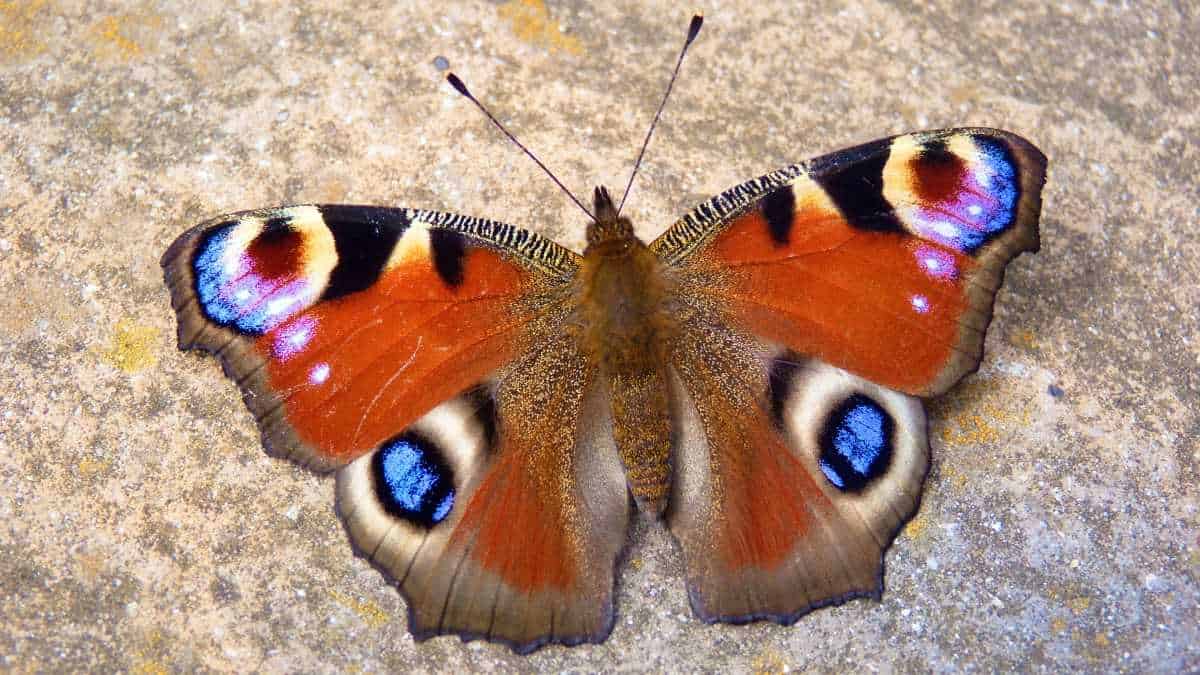
The eyes on the wings of butterflies play an important role in their defense against predators. They serve as a mimicry mechanism that helps butterflies survive in an environment where they are constantly endangered.
The ocelli on the wings give the illusion of having a large eye, which can frighten and deter potential predators. A large eye is perceived by a predator as the eye of a larger predator, which can cause fear and make it refuse to attack.
In addition, the eyes on the wings create the effect of depth, which makes the butterfly more three-dimensional and difficult for a predator to perceive. This allows the butterfly to blend in with its environment and become less visible to predators.
Also, the eyes on the wings can serve as a mechanism for distracting the attention of a predator. They attract the attention of the predator and distract him from the more vulnerable parts of the butterfly's body, such as the head or abdomen. Thus, the ocelli on the wings help the butterfly survive by distracting the predator and protecting its more vulnerable parts of the body.
In general, the eyes on the wings of butterflies play an important role in their defense against predators. They help the butterfly survive in an environment where they are constantly under threat of attack. The mimicry created by the eyes on the wings provides the butterfly with protection and the ability to survive in an environment where predators constantly prey on them.
The evolutionary significance of the peephole on the wings for attracting partners
The ocelli on butterfly wings are of great evolutionary importance in attracting mates. They are bright rounded spots that resemble eyes. These spots can be of different sizes and arrangement on the wings. Eyes allow butterflies to attract the attention of other members of their species and make an impression.
Butterfly wing eyes are one of many traits that influence mate choice. They serve as an indicator of the quality and health of the individual. Brighter and more expressive eyes may indicate stronger and more fertile individuals. This may be due to the presence of more nutrients in the body, which indicates adaptability to the environment.
The ocelli on the wings can also serve as a signal of genetic diversity in a population. Studies show that individuals with a variety of eyes are more likely to survive and reproduce. This is due to the fact that genetic diversity provides populations with higher resistance to various external influences, such as climate change or the emergence of new parasites.
Interestingly, the eyes on butterfly wings may also serve as a defense mechanism against predators. They give the illusion of a larger and more complex structure, making it difficult to define the boundary between the ocelli and the rest of the wing. This can distract the attention of the predator and save the butterfly from attack.
In general, ocelli on butterfly wings are evolutionary adaptations that serve to attract mates and ensure the survival and reproduction of the species. They are an important element in the evolutionary race for survival and reproduction, and their diversity and brilliance reflect the results of natural selection and selection during the evolution of butterflies.
The mechanism of formation of the eye on the wings

The eyespots on butterfly wings are brightly colored, rounded patterns that mimic animal eyes. They are formed through a complex biological reaction that involves several physiological and genetic processes.
One of the main mechanisms by which eyespots form on the wings is the process of development and distribution of pigment cells. Butterflies with eyespots have specialized cells called phantom cells that form the basis for eyespot formation.
When the butterfly is in the larval stage, phantom cells on the wings begin to actively multiply and move around. As a result of this process, bright spots appear on the wings, which subsequently turn into eyes. At the same time, the shape and size of the eyes depend on the genetic characteristics of each species of butterflies.
The formation of eyespots on the wings not only has an aesthetic function, but also plays an important role in protection from predators. Eyepots create the illusion of volume and movement, distracting predators from the vulnerable parts of the butterfly's body and creating the effect of a "scary face". Thanks to this evolutionary adaptation, butterflies with eyespots on their wings have a better chance of surviving and passing on their genes to the next generation.
Current state of research on the peephole on butterfly wings
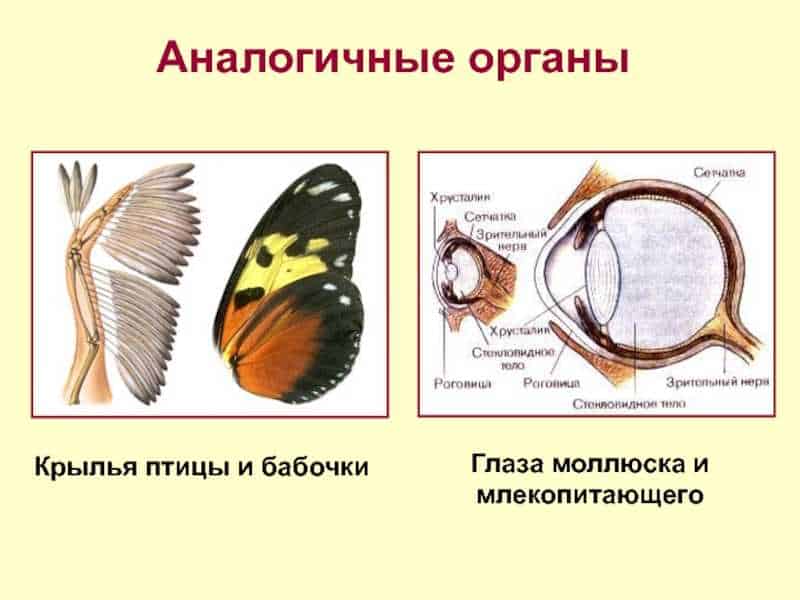
The study of peepholes on butterfly wings is a hot topic in modern science. Scientists from various fields of biology and evolutionary genetics are actively studying the mechanisms of formation and evolution of these structures.
One of the main goals of research is to understand the role of the peepholes on the wings of butterflies in their defense against predators. Scientists are investigating what factors affect the effectiveness of the peephole and how they affect the behavior of predators. Thanks to these studies, it becomes possible to develop new methods of defense against predators, based on the principles used by butterflies.
Also, studies of the eyes on the wings of butterflies are associated with the study of the mechanisms of their formation in the process of embryogenesis. Scientists are trying to figure out which genes are responsible for eye development and which signaling molecules are involved in this process. This allows us to better understand the mechanisms of development of organisms and their evolution.
Modern research is also related to the study of the variety of eyes on the wings of butterflies. Scientists are looking into what factors influence the diversity and distribution of ocelli within species and between different species. They study how these structures can change as a result of natural and artificial selection, as well as environmental influences.



